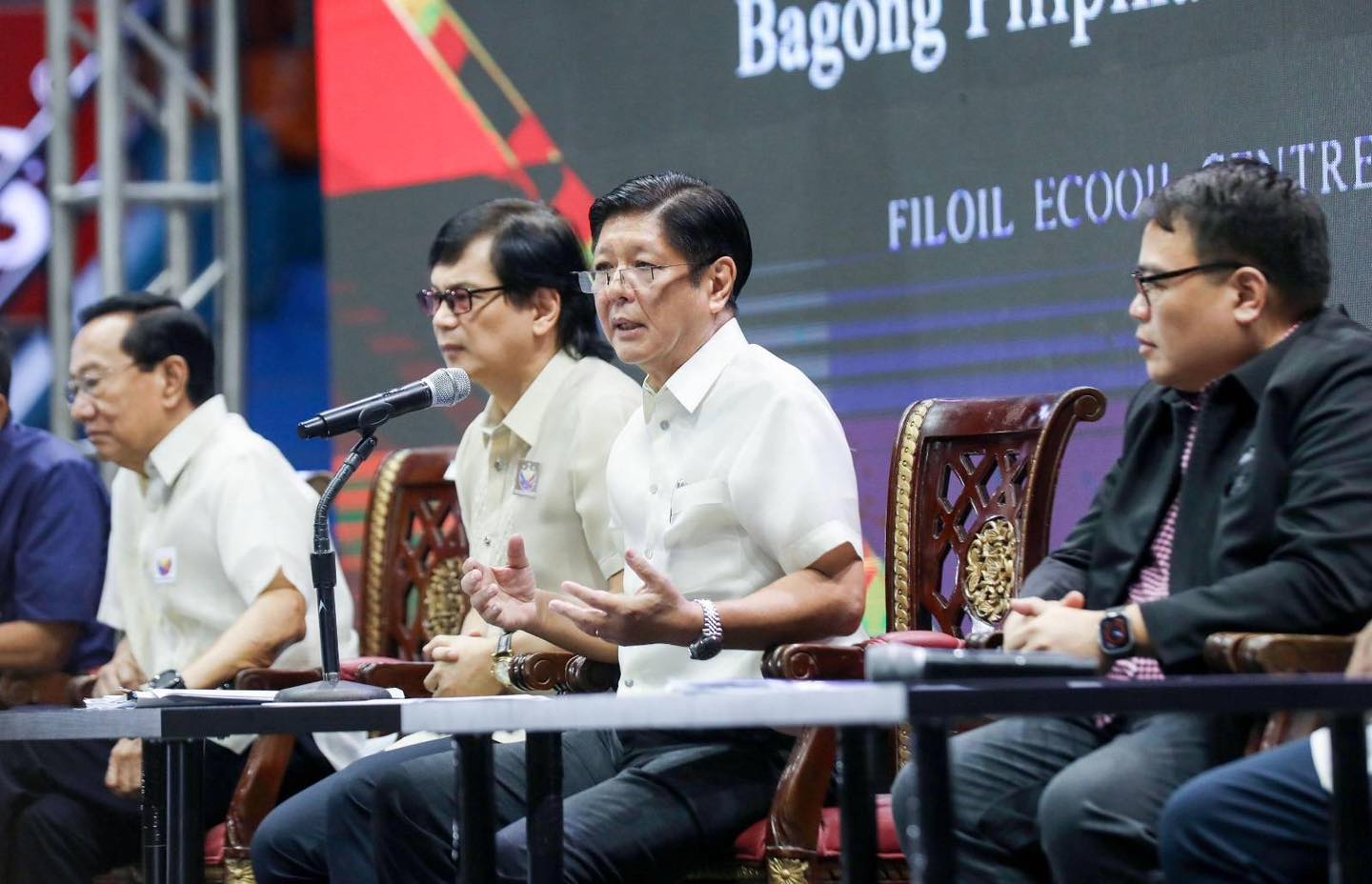
By Brian Jules Campued
President Ferdinand R. Marcos Jr. announced on Wednesday that there will no longer be an extension for the franchise consolidation of public utility vehicles (PUVs), set to end on April 30.
“Wala na pong extension ‘yung modernization. Kailangan na kailangan na natin ‘yan,” Marcos said in the Bagong Pilipinas Town Hall Meeting in San Juan City.
“Aayusin…tinitiyak lang namin na hindi mapabigat pa ang babayaran at ang iuutang ng drayber, operator kaya’t ginagawa nating maayos at ginagawa nating well-organized ‘yung sistema na ‘yan,” he added.
The PUV Modernization Program (PUVMP) requires operators to form cooperatives to access financing in acquiring modern vehicles and replace traditional jeepneys which were classified as not roadworthy based on the standards set by the Land Transportation Office (LTO) as well as to lessen pollution.
The deadline for consolidation was originally set for Dec. 31, 2023, but the President approved the Department of Transportation’s (DOTr) recommendation to extend the deadline to April 30.
According to Malacañang, the Land Transportation and Franchising Regulatory Board (LTFRB) said at least 190,000 PUVs—including UV Express, public utility jeepneys, mini-buses, and buses—have consolidated.
Transport infrastructure
Meanwhile, the President also said that the government will continue to push for the construction of more mass transport systems in the Philippines as it is the only solution to address Metro Manila’s traffic congestion.
“Kaya’t nakikita natin sa mga ibang lugar, kahit ‘yung mga—pag pupunta ka, sasakay ka ng tren, sasakay ka ng subway, makikita mo lahat ng klase ng tao doon sumasakay,” Marcos said.
“Kahit ‘yung mga mayayaman na may kaya, sumasakay sa tren dahil ‘yun ang pinakamabilis mapuntahan. Kahit na ‘yung malalaking siyudad, New York ganoon, London ganoon,” he added.
That’s why, he said, the government is fast-tracking several projects to save the economy from the traffic woes that hamper the country’s progress.
The Chief Executive, likewise, provided updates about the construction of said ongoing projects:
- The North-South Commuter Railway project, or the Tutuban to Malolos: 61% complete
- The North-South Commuter Railway Extension Project, or Malolos to Clark: 56.5% complete
- The North-South Commuter Railway Extension Project-South extension, or Manila to Calamba: 38% complete
- Metro Manila Subway Project: 41% complete
- LRT Line 1, Cavite extension: 80% complete
- MRT Line 3 rehabilitation and maintenance: 85% complete
- Unified Grand Central station, or the Quezon City common station: 83% complete
- MRT line from Quezon City to Bulacan: 67% complete
Transport Secretary Jaime Bautista said that the long term benefits from transport projects will eventually “eclipse” the short-term inconveniences currently experienced by the public as these will help improve mobility and connectivity.
“Our flagship road and rail infrastructures aim to alleviate traffic by offering comfortable, efficient and accessible public transport as better alternatives to private vehicle owners, thus lowering the number of road users,” Bautista told Marcos during the townhall meeting.
Department of Public Works and Highways (DPWH) Secretary Manuel Bonoan, likewise, highlighted some of the key decongestion projects of the agency, including the construction of new roads and bridges.
The completion of the mainline of the 18-kilometer Metro Manila Skyway Stage 3 has reduced travel time from Buendia to Balintawak from two hours to 15-20 minutes, Bonoan said in a statement.
Another project, the 7.7-km NLEX-SLEX Connector Road from Caloocan to Plaza Dilao in Manila is expected to reduce travel time from SLEX to NLEX from two hours to 20 minutes.
“Targeted to be fully completed this year, the NLEX-SLEX Connector Road Project will bring great comfort to many of our motorists once fully operational to its connection with Metro Manila Skyway Stage 3 in Sta. Mesa, Manila,” the DPWH chief added.
Road management
Department of the Interior and Local Government (DILG) Secretary Benjamin Abalos Jr., meanwhile, underscored the cooperation of local government units (LGUs) in the implementation of the plans and projects of the national government.
“We need to have the cooperation of the local governments to understand what the problems are in your place, what the possible solutions are, and how we bring it all together into one complete system which we can monitor and regulate,” Abalos said in a statement.
The DILG, along with LGUs and barangays, will intensify its road-clearing operations in all national roads and streets in the National Capital Region (NCR), according to Abalos.
”Sa ating mga mayors at barangay captains, kausapin natin ang mga residente. Bumaba tayo. Ipaunawa natin na ang bawat mithiin at inisyatibo na ating gagawin at ng ating Pangulo ay upang magkaroon tayo ng mas ligtas na mga lansangan,” he added.
Metropolitan Manila Development Authority (MMDA) Chair Atty. Romando Artes, for his part, said the MMDA is investing in modern technology to effectively address the traffic problem.
These include incorporating artificial intelligence and intelligent transport systems to the agency’s Communications and Command Center as well as using CCTVs for better real-time monitoring.
“Katuwang din ang mga Metro Manila LGUs sa pag-apruba ng mga regulasyon sa trapiko tulad ng Single Ticketing System at Metro Manila Traffic Code; pagbabawal ng mga ilang klase ng sasakyan sa major roads gaya ng mga kuliglig; at ang pagpapatupad ng 7am to 4pm work scheme,” the MMDA statement read.
Meanwhile, LTO Chief Assistant Secretary Atty. Vigor Mendoza II said the agency will intensify its anti-colorum efforts following Marcos’ remarks that there about 30% colorum vehicles traversing national roads.
Legitimate transport operators have also been losing at least 30% of their daily income to colorum operators, Mendoza added.
In a statement, Mendoza said that the LTO will also strengthen the coordination with port authorities to prevent colorum vehicles from making inter-island travel, such as using Roll On, Roll Off (RoRo) vessels.
“We will shut the doors in the various ports to prevent colorum motor vehicles from traveling from Visayas to Metro Manila,” said Mendoza.
“We will also hit them at the terminals and expressways. We will control key junctions in key cities to prevent them from plying,” he added. – avds
